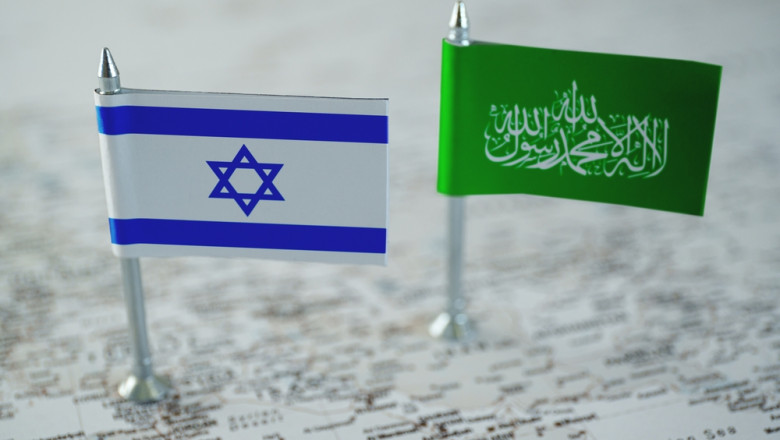Israel and Hamas Begin First Phase of Ceasefire Agreement, Mediated by the U.S.
Politics
2025-10-16 12:30:03
👁️ 2 views

On October 8, 2025, former U.S. President Donald Trump announced the signing of the first phase of a ceasefire agreement between Israel and Hamas following the recent conflict in Gaza. This agreement, mediated by the United States along with Egypt, Qatar, and Turkey, represents a significant step toward stabilizing a region that has been devastated by intense fighting since October 2023.
Key Provisions of the Agreement
The ceasefire signed in Sharm El Sheikh, Egypt, includes several critical measures aimed at reducing tensions and facilitating reconstruction:
Partial withdrawal of Israeli forces: The Israeli military will vacate densely populated areas in Gaza while maintaining control over border zones and peripheral regions for security purposes.
Prisoner and hostage exchanges: Hamas released 20 Israeli hostages, while Israel freed 250 Palestinian prisoners sentenced to life and 1,700 detainees who had been arrested after October 7, 2023.
Opening of the Rafah crossing: The border point between Gaza and Egypt will operate in both directions, enabling humanitarian aid deliveries and civilian movement.
Implementation of a three-phase peace plan: The first phase focuses on the ceasefire and confidence-building measures, followed by restoration of order and regional reconstruction.
Challenges and Ongoing Tensions
Despite the signing of the agreement, several challenges remain:
Ceasefire violations: Sporadic attacks and clashes between Israeli forces and Palestinian armed groups have continued, threatening the stability of the ceasefire.
Public executions in Gaza: Hamas has carried out public executions of individuals accused of collaborating with Israel, drawing international criticism and adding internal tensions.
Delays in returning bodies: Israel returned 90 Palestinian bodies, while Hamas has handed back only 7 of 28 identified Israeli bodies, creating mistrust and dissatisfaction on both sides.
International Reactions and Perspectives
The international community has responded with a mix of optimism and caution:
U.S. and other mediators: The United States, alongside Egypt, Qatar, and Turkey, has provided technical and logistical support for implementing the agreement, emphasizing commitment to regional stability.
International organizations: The UN and humanitarian agencies have called for the full opening of border crossings and unrestricted humanitarian access to prevent a major crisis.
Domestic reactions in Israel and Gaza: In Israel, the agreement was met with cautious approval due to security concerns and the future of relations with Hamas. In Gaza, residents expressed both hope for peace and concern about their future under Hamas governance.
Strategic Implications
The first phase of the ceasefire marks an important milestone, but its effectiveness depends on full compliance from all parties. Ongoing ceasefire violations and internal tensions highlight the complexity of the situation and the need for continued international engagement to ensure a durable peace.
Conclusion
The signing of the initial phase of the ceasefire between Israel and Hamas is a critical step in the peace process, offering a framework to reduce violence and restore essential services. However, its success depends on the commitment of both sides and continued support from the international community. With persistent challenges such as ceasefire breaches and political tensions, sustained diplomatic and humanitarian engagement will be essential to secure lasting stability in Gaza.
